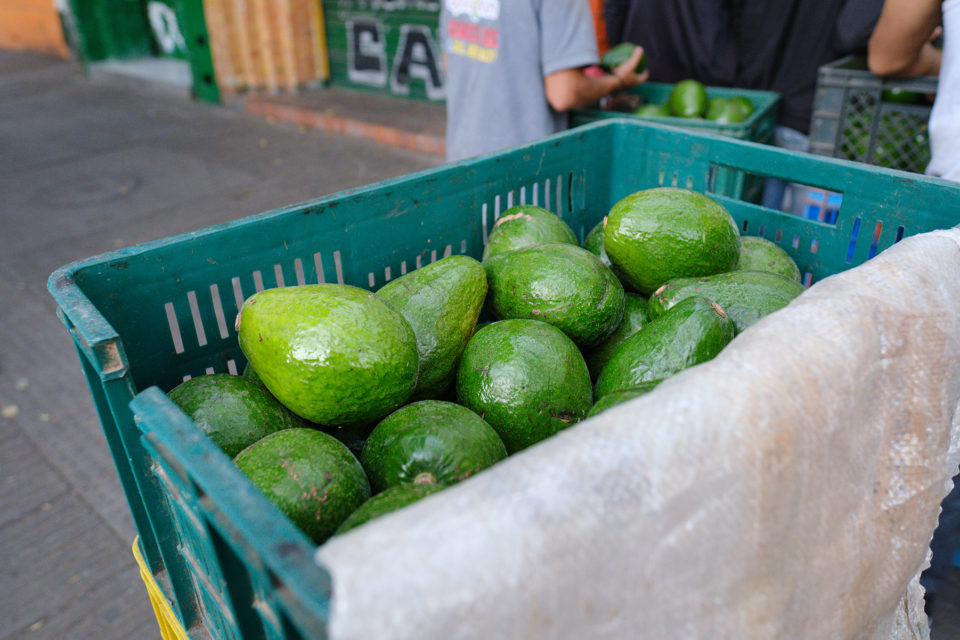The wheels are in motion for supermarkets across the United States to soon be supplied with Colombian avocados. The Andean nation’s National Plant Protection Organization (NPPO) has officially requested that its avocados be authorized for import, and the U.S. Department of Agriculture (USDA) is currently weighing the proposal.
While the agency notes the need for rigorous pest-control protocols before granting authorization, it acknowledges that the guacamole-crazed country cannot meet demand internally. “The increase in demand over the past decade has contributed to domestic producers being able to maintain production levels despite the large increase in avocado imports,” stated the agency in its proposal to change the regulation.
Yesterday, the USDA, through its Animal and Plant Health Inspection Service (APHIS) agency, submitted its proposed rule change to accommodate Colombia’s request and opened up the plan for public comment. While the public comments may unveil more concerns — and U.S.-based producers certainly won’t welcome the competition — the only barrier the USDA sees is logistical.
The agency restricts produce imports from certain parts of the world to prevent the spread of pests, but as long as Hass avocado growers in Colombia can abide by a series of procedures to minimize the risk, APHIS sees no reason to continue prohibiting imports.
“We are proposing to amend the regulations to allow the importation of commercial consignments of fresh Hass avocados from Colombia into the continental United States, subject to a systems approach,” wrote the agency in its report.
The proposal details all the necessary provisions for Colombian producers to start sending their avocados northward, most of which focus on keeping four specific pests out of country. Beyond standard port-of-entry inspection, the document mandates producer registration with Colombian authorities, grove pest-control protocols, ongoing inspection, regular systematic audits, regulator oversight, and packaging stipulations, among other manageable conditions. So while the public comment period lasts through December 27, it looks like the border will be opening up soon for Colombian avocados.
It is happening at just the right time. The price of avocados has surged over the past month in the United States because of a supply shortage. This is largely due to a growers’ strike in Mexico, which produces the bulk of avocados eaten north of the border. Low harvest yields in California have exacerbated the problem.
Mexican growers were holding back their product to protest what they believe is an unfairly low price. This caused the import volume coming into the United States to fall to a trickle. Nearly 34.5 million pounds of avocados came from Mexico to the United States during the week of September 11, according to the California-based trade group Hass Avocado Board.
By the week of October 16, that number plummeted to just eight million. “The primary issue revolved around sales negotiations between the growers and packers,” said the Association of Growers and Packers of Avocados From Mexico (APEAM) in a statement.
The strike has ended, and imports into the United States spiked all the way to 50 million pounds in the last week for which data is available. But the damage has already been done to the market supply that may not recover until next year. “We’re not going to have any avocados for anybody for maybe a week and a half,” Cythnia Guzman of California-based distributor Nature’s Produce, told CNBC last week. “We’re seeing fruit out there at double the price it normally would be.”
The industry tried to address the shortage by increasing imports from Chile, which upped its supply from one million pounds to three million during the month when Mexican producers went on strike. But this wasn’t even enough to offset the drop in California production (which fell from three million pounds to under 2,000 pounds amid a weak harvest).
The Dominican Republic and New Zealand also ship low quantities of Hass acovados to the United States. Peru became a low-volume importer after winning approval in 2010 as well. But outside of Mexico and California, only Chile adds a significant volume to an increasingly voracious avocado-eating market.
The APHIS acknowledges that added competition from Colombian producers could negatively impact farmers in California. Their loss could be as high as $6 million USD depending upon the added import volume. But the overall effect would be positive for the country, as a larger supply would help the wallets of consumers, albeit only with a price drop of about 2%. “Consumer welfare gains outweigh producer welfare losses,” said the agency.
More than price, however, the biggest benefit would come from receiving another supply point. At the current rate of demand increase, Mexico and California likely cannot keep up. Nearly 2.2 billion pounds of Hass avocados were shipped in the country last year — almost double the 1.1 billion in 2011, per the Hass Avocado Board.
“A growing U.S. population and growing Hispanic share of the population, greater awareness of the avocado’s health benefits, year-round availability of fresh, affordable Hass avocados, and greater disposable income have contributed to the increased demand,” said the APHIS in its proposal.
Demand is also rising sharply in China, where Peru sends more of its crop. According to the Global Times of China, the nation of 1.4 billion imported 12,319 tons of avocados from Peru in 2015 and is projected to bring in 22,764 tons in 2016. And that pales in comparison to the 37,075 tons of imports — from Peru alone — forecasted in 2017.
Colombia is an obvious candidate to help fill global demand. Avocados are ubiquitous throughout the tropical nation of nearly 50 million people, and many believe its agribusiness sector is set for a boom. The country’s 52-year conflict with the Revolutionary Armed Forces of Colombia (FARC) guerrilla group has kept farmers from reaching their potential, with danger in rural areas and the pressure to grow more-lucrative coca plants suppressing the development of other crops.
If the red tape from U.S. regulators can be cleared so that Colombian farmers can start exporting to the world’s largest market, production in the country could skyrocket. And if a larger Colombian crop can also help keep prices down for guacamole lovers in New York and Los Angeles, everyone in both nations — with perhaps the exception of growers in California — will be happy to see Colombia share its delicious avocados with the rest of the world.
Photo: Avocados ready for sale in Bogotá, Colombia. (Photo credit: Jared Wade)
This article was originally published by Finance Colombia. It has been reprinted with permission.


